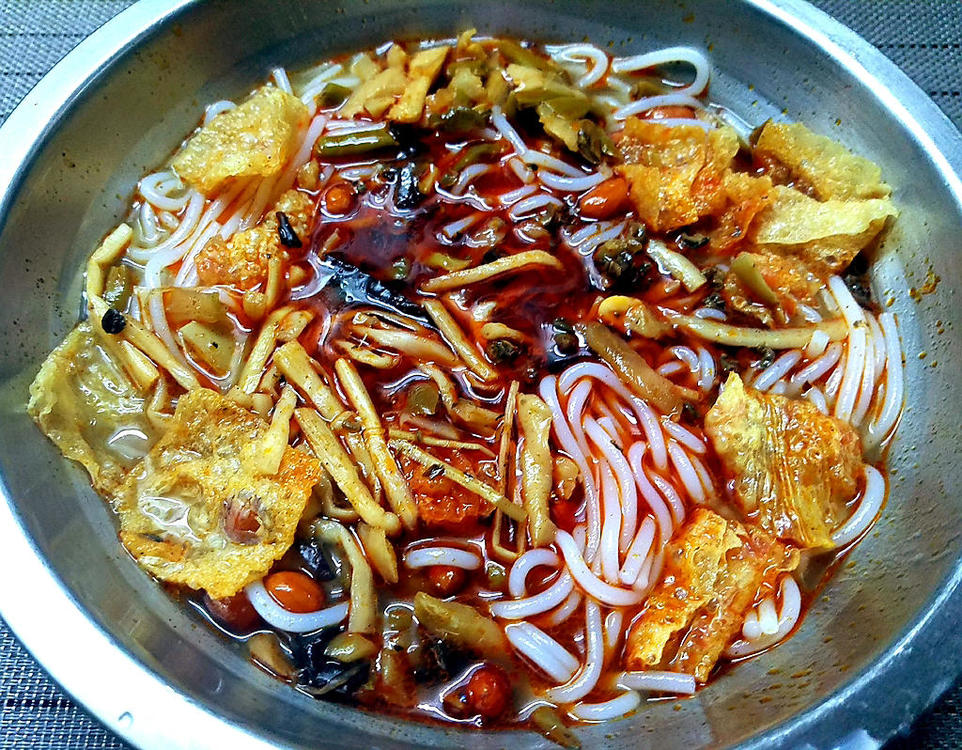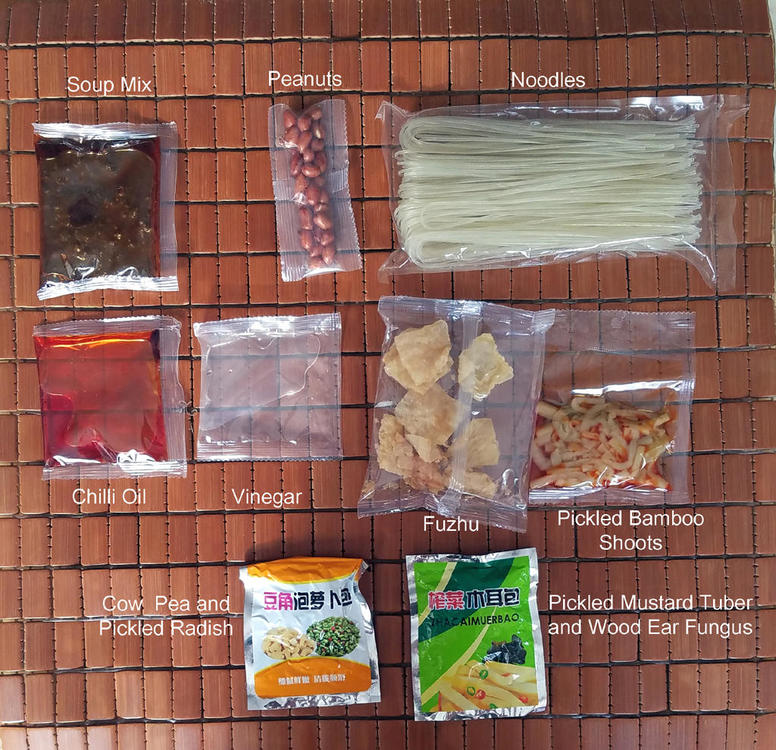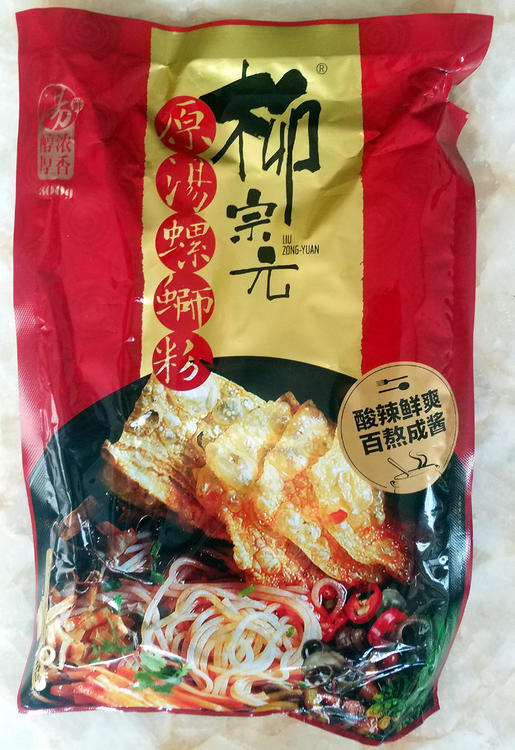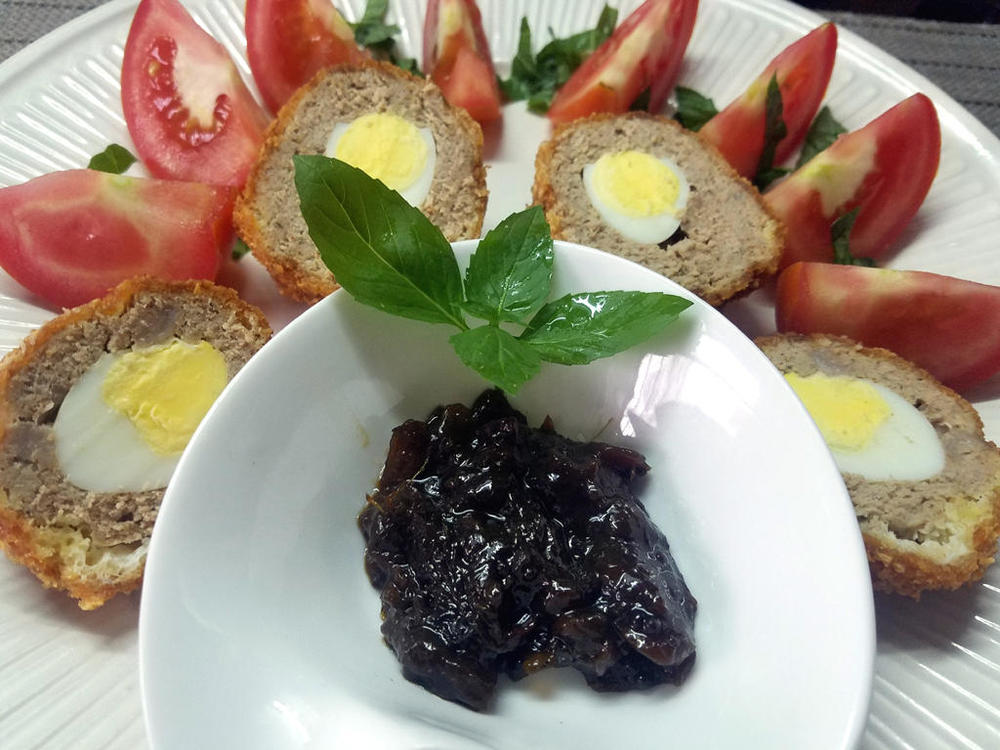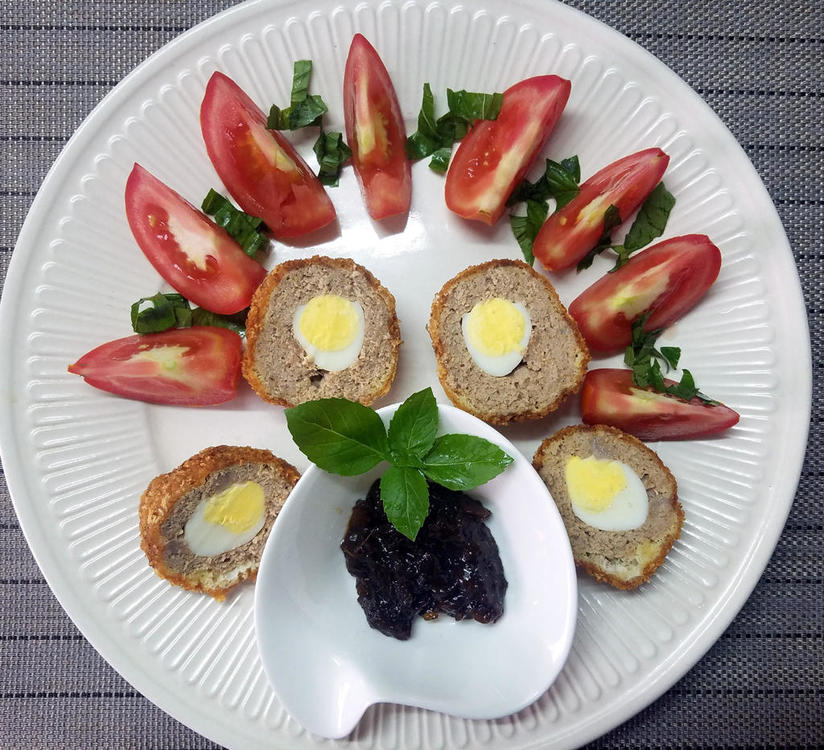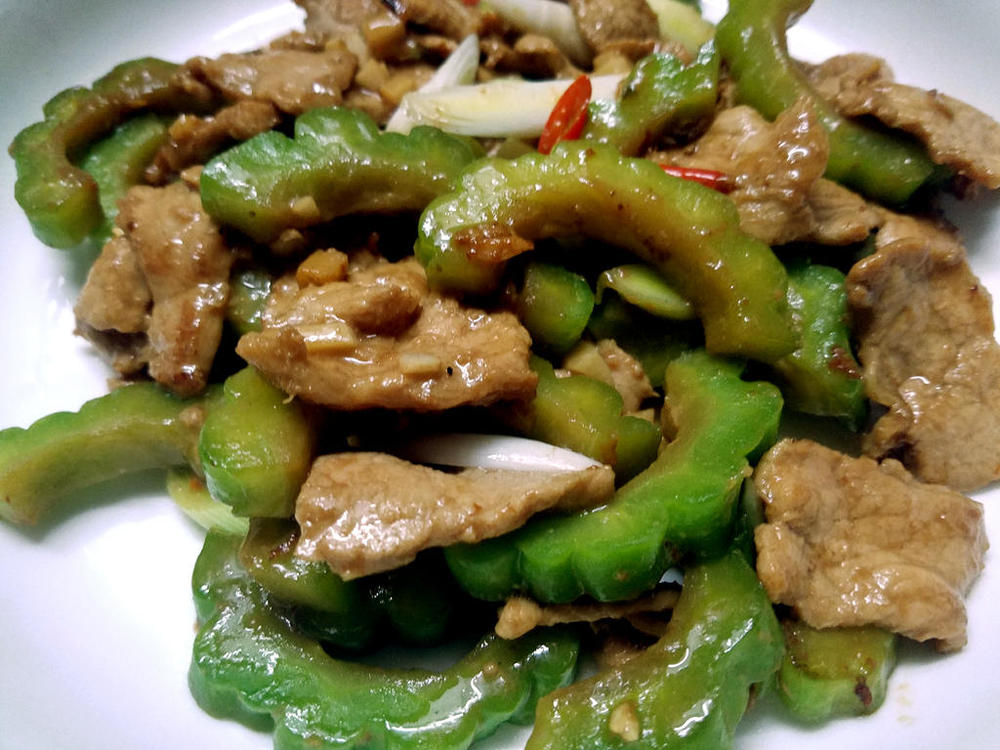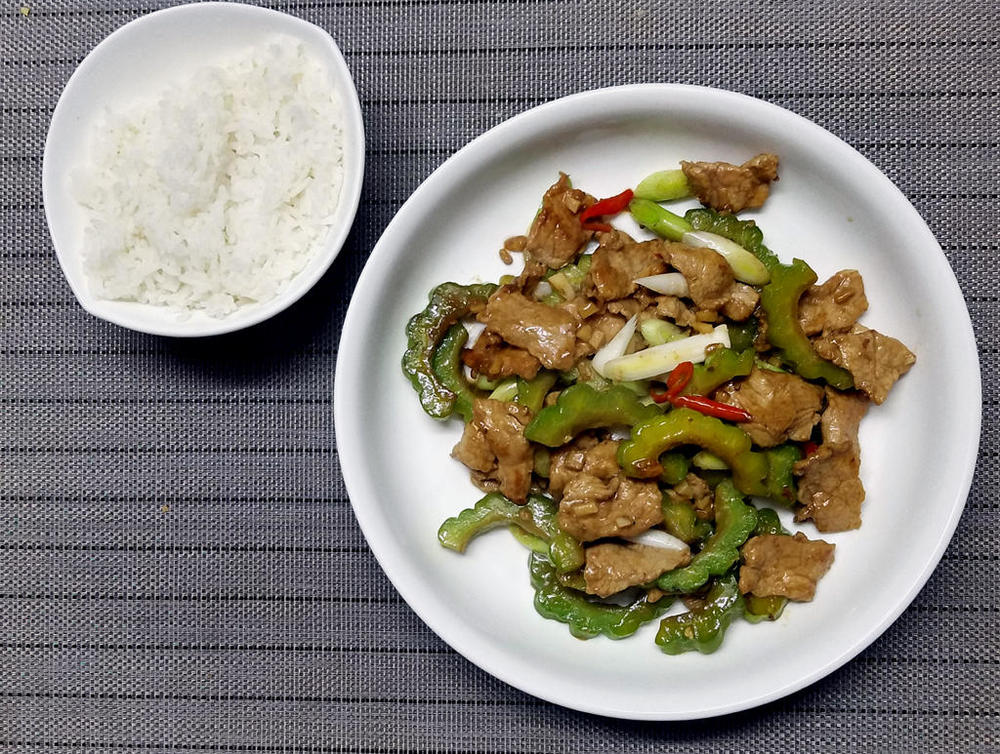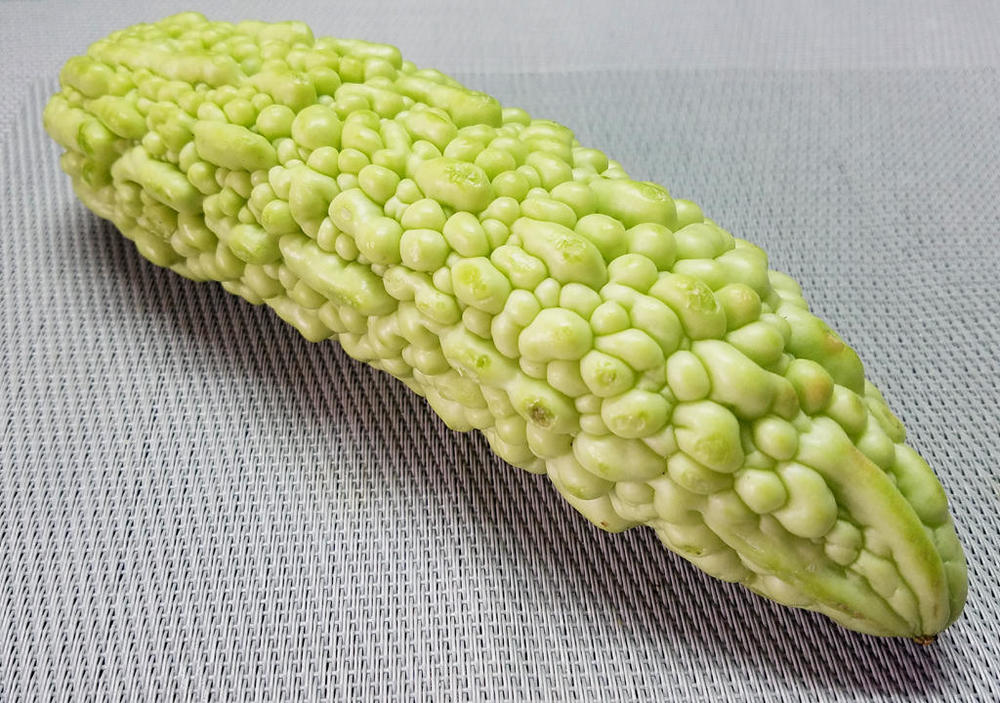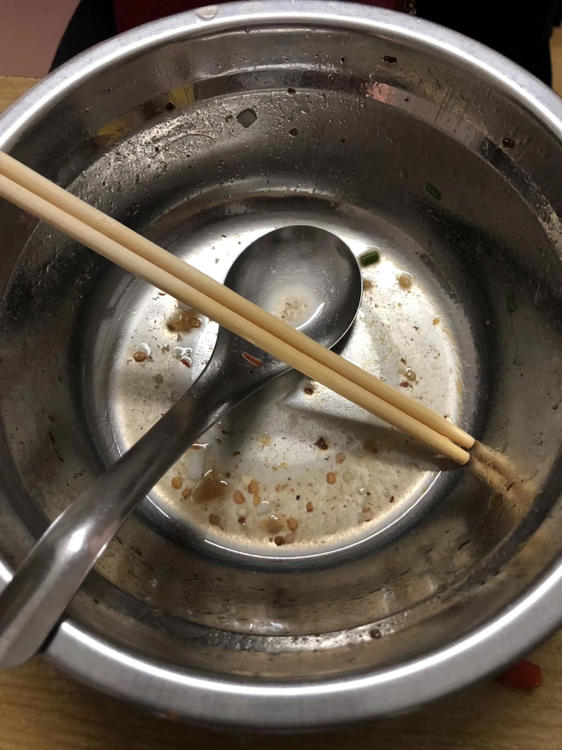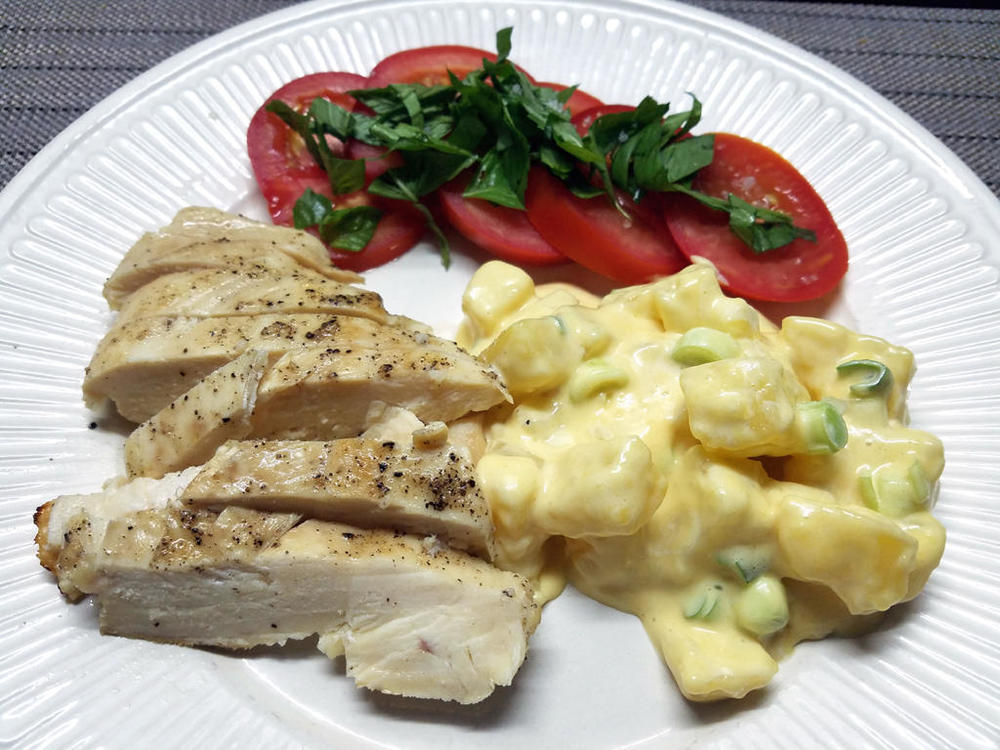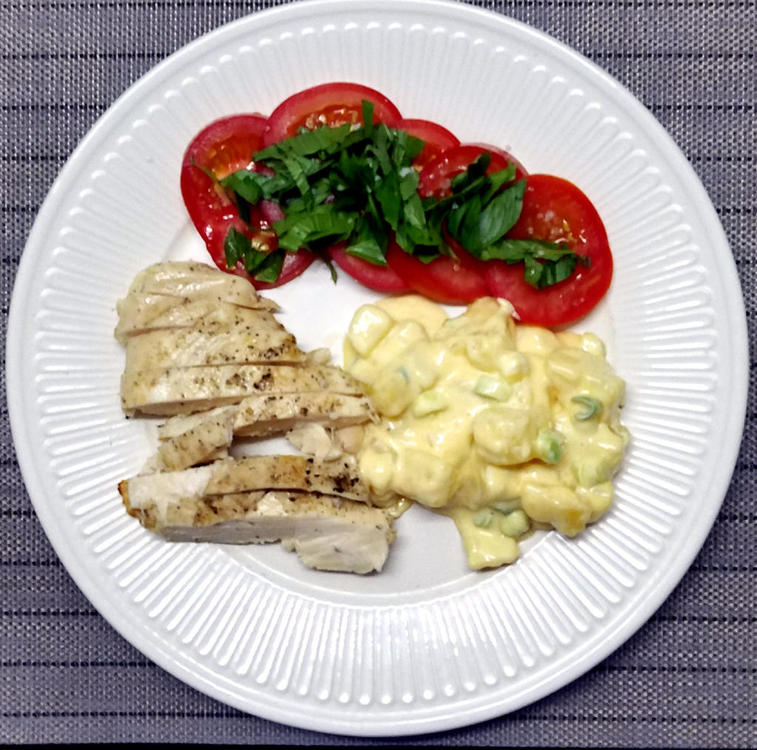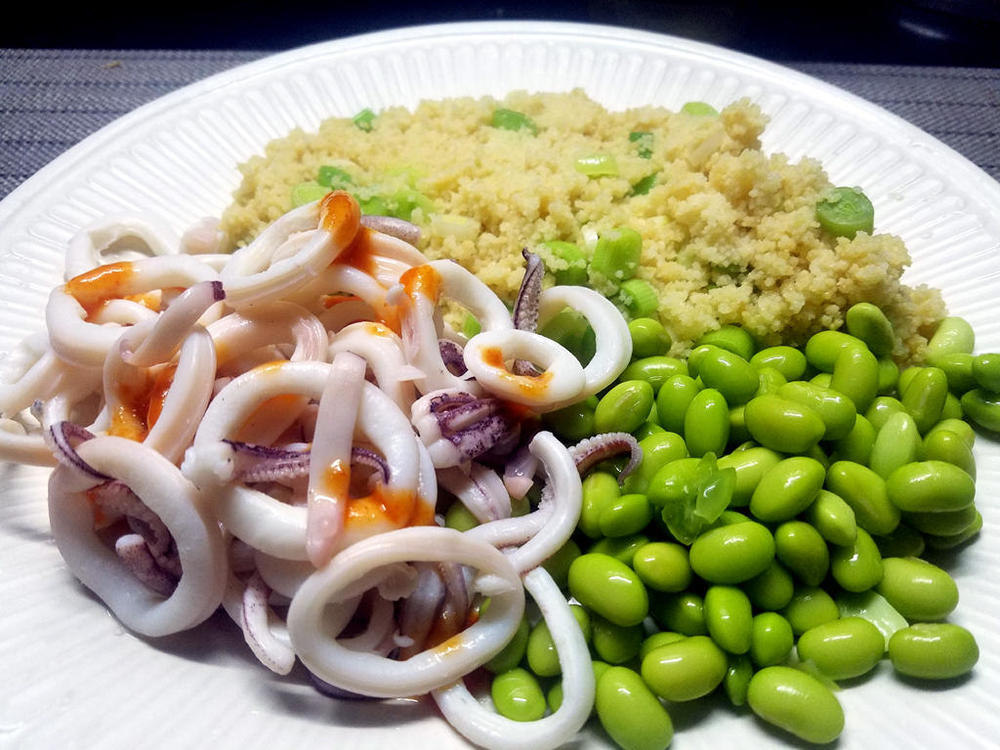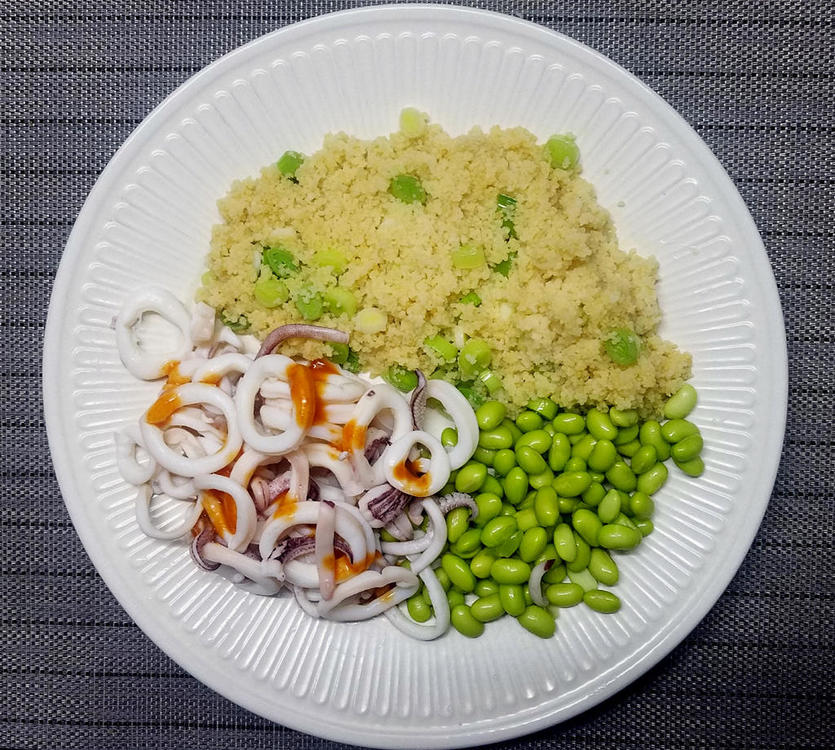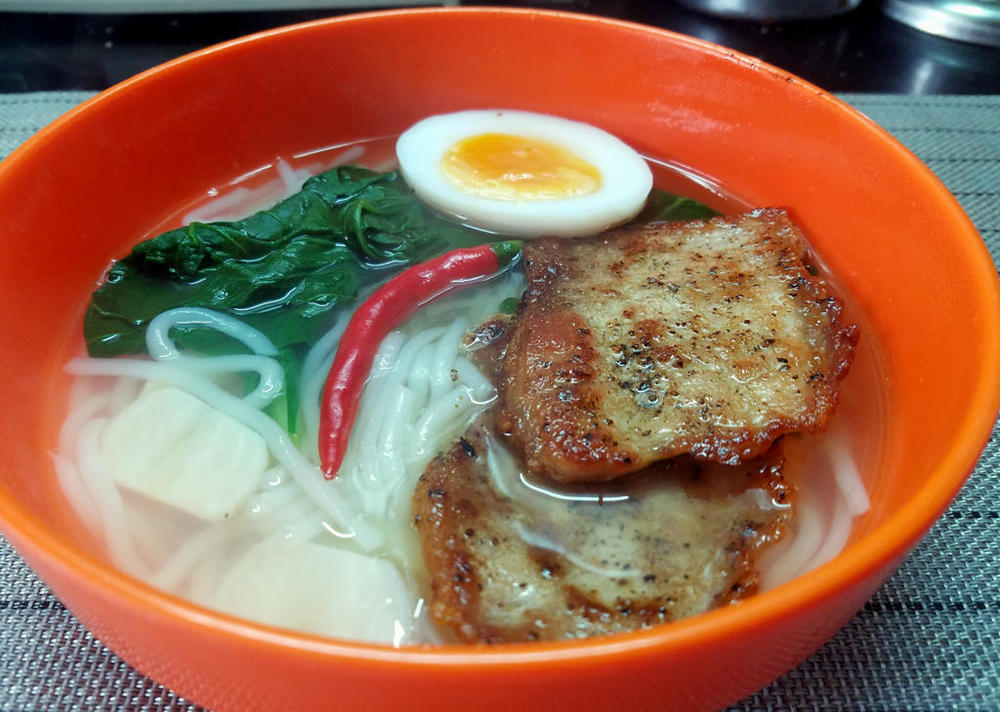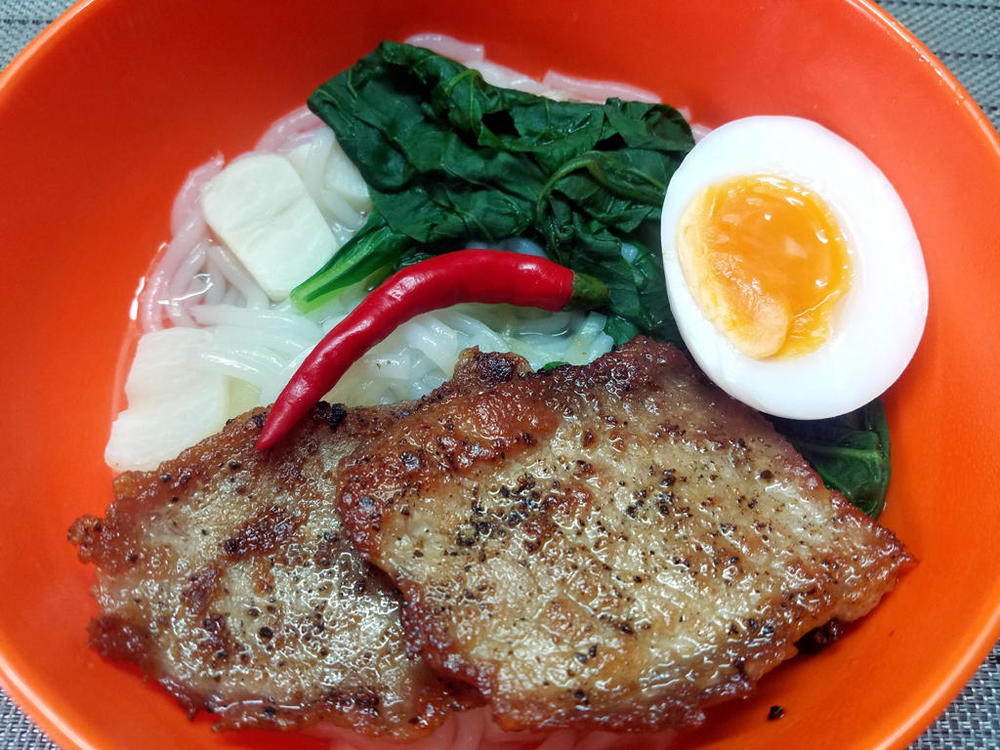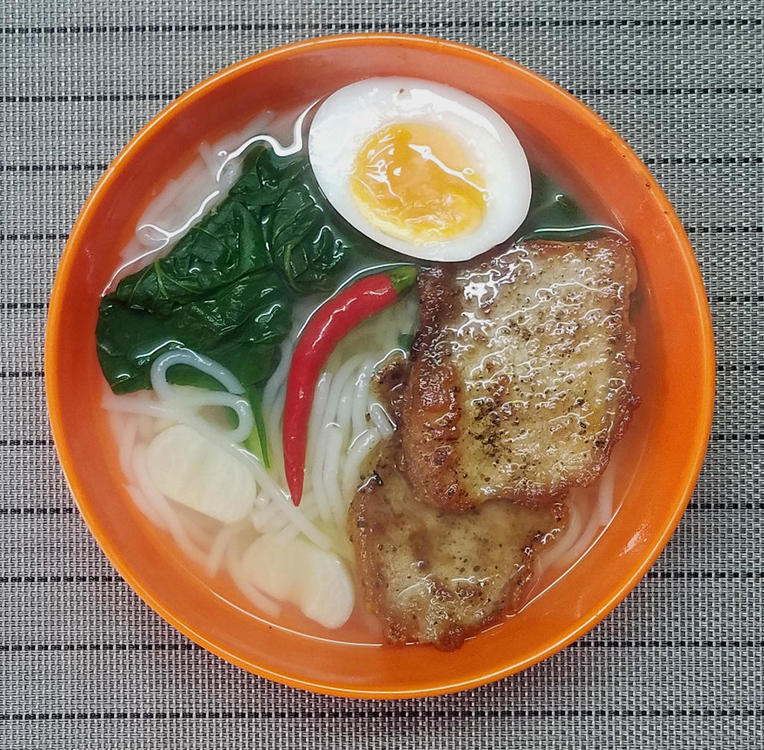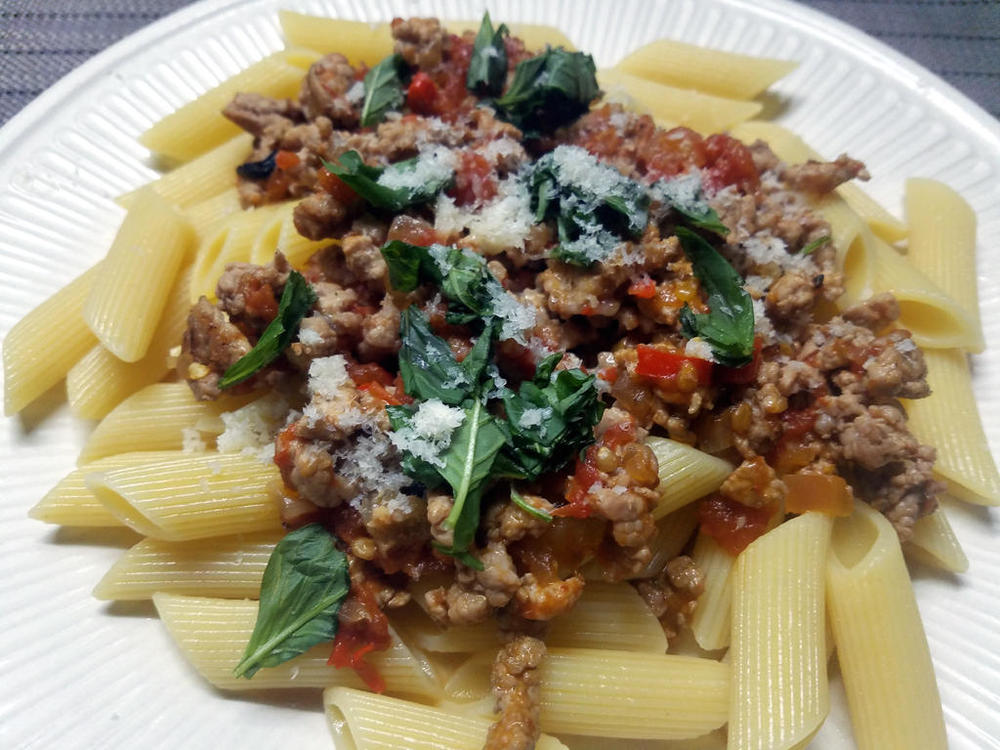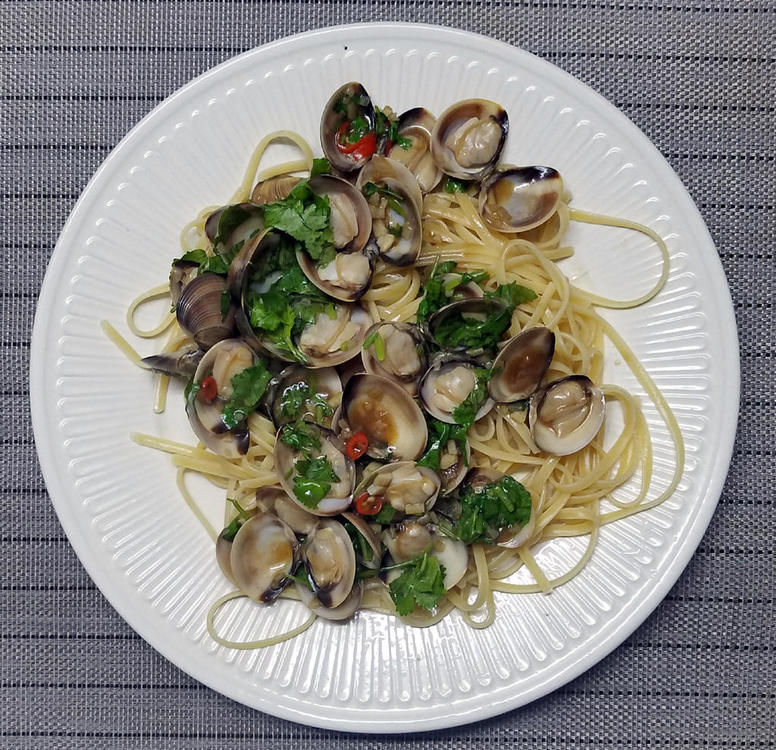-
Posts
16,728 -
Joined
-
Last visited
Content Type
Profiles
Forums
Store
Help Articles
Everything posted by liuzhou
-
I knew it wasn't a good idea, but did it anyway. A few weeks back, I was given a box of packs of an "instant" variety of the local iconic noodle dish, Luosifen (螺蛳粉 luó sī fěn, pronounced roughly as Low Si Fun but with a different tone on each syllable.) I like this dish. Typically, it is sold in small restaurants which are no bigger than shacks. A few years ago, the dish was featured on the highly successful Chinese television Series, "A Bite of China" and factories started making these ersatz "instant" versions. For the real version, the stock/broth/soup base is based on the local river snails (螺蛳 luó sī). These are boiled, along with pork bones, for anywhere between 3 and 10 hours. Additional ingredients include black cardamom, fennel seed, dried tangerine peel, cassia bark, cloves, salt, pepper, bay leaf, licorice root, sand ginger, and star anise. No one really weighs or measures anything. Each shop ‘knows’ how much of anything is needed. There may be other ingredients, too. Once the broth is ready, rice noodles made from ‘old rice’ are added. The ‘old rice’ gives the noodles a firmer, more chewy texture than other rice noodles such as those used in Guilin Mifen (桂林米粉 guì lín mǐ fěn), for example. Alongside the noodles, fried dried beancurd sticks, pickled bamboo shoots, black wood ear fungus, lettuce, peanuts and preserved cow peas are also added. A hefty slug of chilli oil is necessary for authenticity. You may add more chilli, pickles etc to taste. Then you are ready to rock. To prepare instant luosifen, you boil the wrong noodles then add water and a bunch of gloop from plastic bags. This is what I had: This bag contained nine smaller bags. Here I've translated that they are: The ingredients list is as follows: Rice noodle bag: dry rice noodles (rice, edible corn starch, water) Sauce bag: fresh snail meat, vegetable oil, edible salt, spice, rock sugar, monosodium glutamate (MSG), chicken powder, bone soup, rice wine, cassia bark. Small vegetable bag: sour bamboo shoots, black wood ear fungus, mustard, dried radish, capers, vinegar, salt, paprika, potassium sorbate, sodium benzoate) Fuzhu bag: dried bean milk skin, sodium metabisulfite, edible oil Peanut Pack: Peanut, Edible Oil Spicy oil bag: cooking oil, chilli, spice I love me some sodium metabisulfite. The instructions told me to boil the noodles for 10 to 12 minutes (I choose the lower end of the spectrum), then drain and set aside. I was then instructed to boil 350 ml of water and add the soup mix. Stir until well mixed, add the cooked noodles and the rest of the ingredients to taste. In the interests of exactitude I added everything. I was convinced the 350ml of water was misguided but was determined to follow their recipe. Although the finished product looked right, it tasted awful. Massively over-salted, over MSG-ed and tasting of raw chilli. While a good luosifen does pack a clout, it is also full of complex and subtle tastes. This was just a hit to the head with a blunt instrument. I'd say I was disappointed, but I wasn't expecting any miracles. My problem now is I have another 11 packs of this. I'll need to find some people I don't like to pass them on to.
-
For the love of cookbooks.
- 1 reply
-
- 7
-

-
A day off work. Home made spicy quail scotch eggs, tomato, balcony basil and home made mango relish. There are more Scotch eggs in the fridge for munching later.
-
I have read that "it’s best to toss the bitter melon in some salt and let it sit for 30 to 45 minutes to help draw out some of the bitterness and excess liquid.” I've never done that, though. I like the bitterness.
-
I think he is the funniest man on the planet. And also a great actor.His role in Mrs Brown was stunningly good. I have met him twice (but seen him in performance more often). Once before he was famous outside Glasgow. I was a student and had a part-time weekend job in a Glasgow record shop. He bought a Kinks album from me. Several years later, I met him again, in a London restaurant. His act isn't an act. He is really like that. And his very long shows are totally unscripted or rehearsed.
-
No. it doesn't need to be peeled. The thing to do is halve it lengthwise and scoop out the seeds and surrounding pith, then slice into crescents. I've never soaked them. That may reduce the bitterness, but if you don't like bitter, then why eat them in the first place? The level of bitterness does vary between samples apparently at random, but I've never come across one that was too bitter to be edible. But then I like bitter.
-
I found this beauty in the market this morning and that decided dinner. 苦瓜肉片 (kǔ guā ròu piàn), bitter melon with pork. The pork was marinated with garlic, ginger, chilli, potato starch, Shaoxing wine and soy sauce, then stir fried with the de-seeded, sliced bitter melon. Sliced scallions and sesame oil to to finish. Served with rice.
-
Potatoes Of The Night - Billy Connolly See warning last post.
-
Warning: Unbridled profanity ahead (What the %^&* did you expect? It's Billy Connolly.)
-
Beihai (北海) is a smallish city in the south of Guangxi, by the sea, near the border with Vietnam. It's about two hours away from me and is seafood central. Nearly all the seafood and sea fish I can buy is caught there. Like most cities here, it has it's own 'iconic' noodle dish. Rice noodles with clams. The correct way to eat them is to put them into your mouth over and over until your bowl looks like this. (Do not eat the clam shells. Throw them on the floor.)
-
Your non-egg based breakfast seems to have eight eggs in it!
-
Summer food. 38ºC. In the shade. 1-10-10 chicken. Pre-brined for 4 hours. Not a drop of sous or vide. Left to rest for about 30 minutes. Tender and juicy. Home made potato salad. No I didn't make the potatoes, but I did cook them. Made the mayonnaise, though. Egg, mustard, a splash of rice vinegar and rice bran oil. A winner. Tomato and balcony basil with black pepper and lemon dressing. Seconds were had. (Don't mention the thirds!)
-
Exactly.
-
I haven't seen straight since January 1963. Have never wanted to. But still manage to comment. Sometimes.
-
What a novel idea!
-
What tiny percentage of the population use sous vide? The topic has every relevance to today and tomorrow.
-
Squid boiled for one minute in acidulated water. Srirarcha. Edamame. Couscous with scallions. There was a small and simple side salad.
-
Freshly made rice noodles* with pork tenderloin slices, garlic, baby bok choy, green and red chilli, rice wine and rice vinegar. Boiled duck egg. Before adding broth to the bowl: and after: * by my neighbour.
-
Next time you are passing drop in! Much as I like beef, I'm with you on most pasta pairings. Although, I have to say, a few years back, I did have one hare and pasta dish which was literally awesome.
-
Penne rigata with a pork ragu. Onions, fresh tomato, red chilli, red wine. S&P. Finished with balcony basil and grana padano.
-
Yeah. Apparently when Kissinger visited Mao to set up the Nixon-Mao meeting, he presented the Chairman with a John Denver cassette as a gift from the then President and so, Denver became the only approved western singer.
-
Another fine tribute here from Matthew Fort. THE FINEST MEAL OF MY LIFE
-
Now you mentiuon it, I have heard that in China, too.
-
The packet of fresh ramen noodles I was 100% sure I had in the fridge has evaporated into thin air, so this is not quite what was intended. A deft noodle substitution was called for. Linguine with clams. Clams done with garlic, ginger, shallots , coriander leaf (cilantro), Shaoxing wine and oyster sauce.
-
You remind me. A few months back my dear friend J invited me to lunch at her place and her husband cooked what I was told was chicken in aged vinegar. That is what the Chinese call matured Zhenjiang vinegar (镇江香醋 zhèn jiāng xiāng cù) and what America calls Chinkiang, or some such nonsense. Anyway, what ever you call it, the dish was delicious. I must ask them for the recipe. It will not be withheld.



